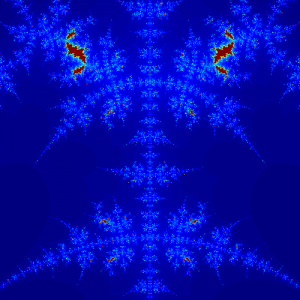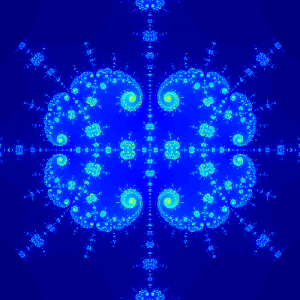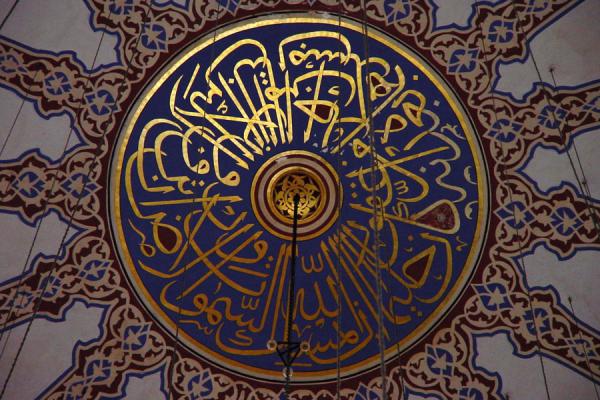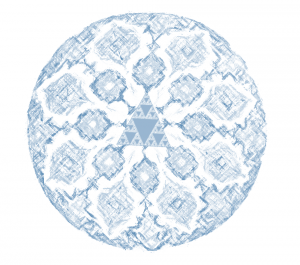Introduction Essay
For most of my life, I have been indirectly surrounded by aspects of Islam, despite having little understanding of the religion. My first few interactions with Islam were mostly from watching Indian movies that had Muslim characters in them. After September 11, I would hear about it on random news segments or be confronted with the concept of Islam by people who would mistake me for a Muslim. When I was in middle school, a Mosque was built on my very block, just a couple hundred feet from my house. I even found out that there were writings by Muslim sufi sheikhs in the Holy Scripture of Sikhism and had read them, but I neither knew their meaning nor researched further as to what similarities the two religions shared. But through this class, I have gained both a greater understanding of the themes underlying Islam a well as a greater appreciation for how Islam has influenced all sorts of different cultures around the world.
The first concept I learned in this class was the idea that different political and cultural environments shaped the history and even parts of the ideology of Islam. Having joined the class a few weeks into the semester, my first lecture was during week 5 and it was on authority in Post-prophetic Islam. Professor Asani laid out a convincing case for the argument that different practices in Islam and the subsequent perception of these practices developed due to the political systems present. In particular, we discussed how Sunni Muslims became distinct from Shia Muslims and how western tradition has sought to label these traditions as “orthodox” and “heterodox”. We also discussed how multiple interpretations of the same Hadiths, or sayings of the Prophet as passed down by his companions and eventually transcribed, and verses from the Quran existed to justify different political dynasties and eventually came to further distinguish these two sects of Islam. While I certainly learned a great deal regarding the main differences between these two versions of Islam, and how even these two labels are misleading due to the various subparts, what was most interesting to me was the complete overlap of certain practices in Islam and Sikhism. In particular, the concept of Dhikr, or the repetition of the name of God, is used in both. The idea behind Dhikr is to repeat the name of God to symbolize the internalization of God and to constantly remember his existence in the world around oneself. This is often conducted as part of a musical performance or as part of meditation. Moreover, since Islam is practiced across the world, the types of instruments that one might play while singing vary widely depending on the cultural context of the worshipper. To highlight these concepts, I practiced Dhikr using the name of God in Sikhism along with the guitar, a very American musical instrument as a symbol of the intersection between religions and cultures that Islam can be a part of.
In week 6, we dove further into the concept of cultural communities shaping the various interpretation of Islam. In particular, we read excerpts from The Topkapi Scroll and Islam and the Modern Age to set up a debate in section regarding the source of inspiration for various artistic endeavors in Islam. In many ways, this debate struck at the heart of this class’ message. On the one hand, Nasr argued that Islamic art stems from the spiritual nature of Islam and finds its inspiration in the divine whereas on the other hand, Necipoglu argues that such sweeping generalizations are unsubstantiated by historical data which point towards the dissimilarities between Islamic art in different cultures and the evolution of certain themes over time. Necipoglu’s argument seems to me the crux of the message that Professor Asani seems to suggest in this class. Personally, I felt it was likely that the true answer lay somewhere in between. Islamic artists very likely drew inspiration from a number of sources so that while they were certainly inspired in part by their devotion to Islamic principles, they were equally likely to have been influenced by the culture around them. One thing I learned this week was that the idea that Islam is opposed to art and music is simply incorrect. To be sure, certain interpretations of Islam such as Wahhabism involve suppression of many art forms, but Islamic civilizations have been responsible for the construction of many beautiful artistic creations. I experienced firsthand some of the most beautiful buildings I had ever seen when I visited Istanbul a few months prior, though at the time I was unaware of the religious significance and the cultural context surrounding their construction. As a response to these ideas, I created a small arabesque design representing mathematical concepts and a geometric design as seen on the ceilings of the Hagia Sophia and the Blue Mosque in Istanbul. One thing I already knew before this class was that Islamic civilizations during the European Middle Ages were great centers of mathematic and scientific research and produced significant advances in many fields and so I used some mathematical concepts in my drawing as a tribute to these scientists such as Chaos Theory. Moreover, many Islamic artists gave serious thought to geometry as a representation of the oneness of God and studied it as a manifestation of natural laws created by God in the world around them so I felt it was important to include such considerations in my drawing.
In week 7, we dove deeper into some of the differences in Islamic practices between different cultures around the world. One example included the widespread practice of worshipping Marabouts in Western Africa and associating spiritual power with the person instead of some religious institution that this person claims to represent. Another example was in the use of mystic symbolism as a means of expressing one’s understanding of Islam beyond ritual practices in South Asia. To this end, we read an excerpt from Ecstasy and Enlightenment on the usage of bridal symbolism. This symbolism is a representation of the idea that God is the husband/lover of all humans on earth. This particular symbolism was very interesting to me since I had previously been introduced to it through the context of Sikhism where it is abundantly cited throughout the Scripture, but its not something I ever would have imagined in Islam due to my biased prior understanding of Islam. What I learned is that all sorts of mystical interpretations exist throughout Islam and are expressed in art forms, particularly in poetry such as the kind found in the Sikh scriptures (some of which was written by Muslim Sufi saints). Referring specifically to the bridal symbolism, one key theme is the idea of “seeing” the beloved (God) with one’s eyes. The interesting idea here is the stress on the sense of vision as the means by which to experience the sensation of God. This is in some ways a contrast to the more “strict” interpretation of Islam which emphasizes the importance of the written word and on sound, given that sound was the means by which the Quran was initially given to the Prophet. In my art, I strove to combine both concepts by writing a poem using this love symbolism. It combined the emphasis on writing (though the poem was written in English which does not hold the level of respect that Arabic does in Islam) and especially in poetic forms with the mystical symbolism of love with God.
In week 8, the reading of Seven Doors to Islam cited the existence of stories used to teach morals and the importance of certain religious practices to the reader. Up until this week, I had thought that Muslims only referred to stories and sayings from the life of the Prophet himself and used morals from those stories. However, I was mistaken. There is an extensive history of exposition in the form of short stories of all forms, whether they are fables, or short stories on small parts of the lives of other Prophets that are meant to teach some sort of lesson. We were lucky enough to read such a story in week 10 when we read The Conference of the Birds. This story related the tale of 30 birds in their quest to find a mythical king and is meant to represent an allegory for the human search for God. Each bird represents some aspect of human personality and how having the wrong personality can prevent one from truly submitting themselves to God. The existence of such stories further cements the idea of different interpretations of Islam since the stories stress different ideas in relation to how one should live their life even though the source inspiration for all of them is the devotion of the author who all claim to be Muslims. As a response to some of these ideas, I wrote a short story about the Prophet Joseph who tries to save a village from a flood using prophecy in which the lesson is to always listen to the word of the Prophet even if it does not make sense. I also wrote a computer program to generate fractal images that represented some of the ideas present in the birds’ quest.
In week 9 we explored further the Sufi traditions of poetry in the form of the Ghazal in both our class discussion and in our readings of Persian Sufi Poetry and Conventions of the Urdu Ghazal. I had already explored the idea of poetry to some extent in week 7 when we discussed bridal symbolism, but I jumped the gun so to speak. Even though much of the poetry we discussed this week was still love poetry, the thematic depth and diversity of form were far deeper than what I had previously been acquainted with. Moreover, Professor Asani discussed the incredible respect given to poets in society in many Muslim countries which was something I had never expected and even found hard to believe. Poetry serves an important purpose in these cultures and this purpose found its way into the expression of Islamic devotion in these cultures as well through the Ghazal and through narrative epics such as The Mathnawi. The Ghazal, I learned, is the oldest currently existing poetic form. It is formed of a series of couplets, often disjoint, with the last word usually repeated in the 2nd line of each couplet (and the 1st line of the 1st couplet). The most common theme of Ghazals is love. Whether this love is earthly or mystical is usually unclear since the lover is never named and never given a gender. I also never realized that I had listened to many Ghazals being performed as a kid without knowing what they were. The Ghazal is apparently one of the more popular poetic forms in Punjabi, a language very similar to Urdu, likely due to the influence of the large Muslim population in the region, and I had heard many of these poems in various shows or on television. As a representation of these ideas, I wrote love poems in the form of Haikus as a way to not only stress the emphasis on love in Sufi poetry, but also to express it in a poetic form of a culture not typically associated with Islam to highlight the multicultural dimensions of Islam.
Overall, I learned a lot through this course. I learned much about some of the many different interpretations of Islam and the motivations behind how these interpretations came into being. I learned about some of the practices and their meanings as well as how different people also express their devotion through artistic mediums I did not associate with Islam in the past. But more than just learning about Islam, I also learned about my own philosophies and about the world in general. Aside from understanding some of the major influences in Sikhism which I had not explored in detail before this course, I also came to learn a viewpoint on religion that seeks not to define religions as monolithic institutions intent on coercing whole populations into a single practice at the expense of local cultures, but as sources of common inspiration to be molded and shaped into the fabric of the locality in which they become embedded. Mostly, I learned to think more critically about my biased definitions of cultures and religious practices around the world and question how these practices came to develop, how they differ, and to never assume that one person’s definition of anything is the same as anyone else’s. It is this diversity of interpretation that leads to such creativity in thought and I hope that we can all learn to better understand the different perspectives we all hold to create a more harmonious and mutually beneficial society.







